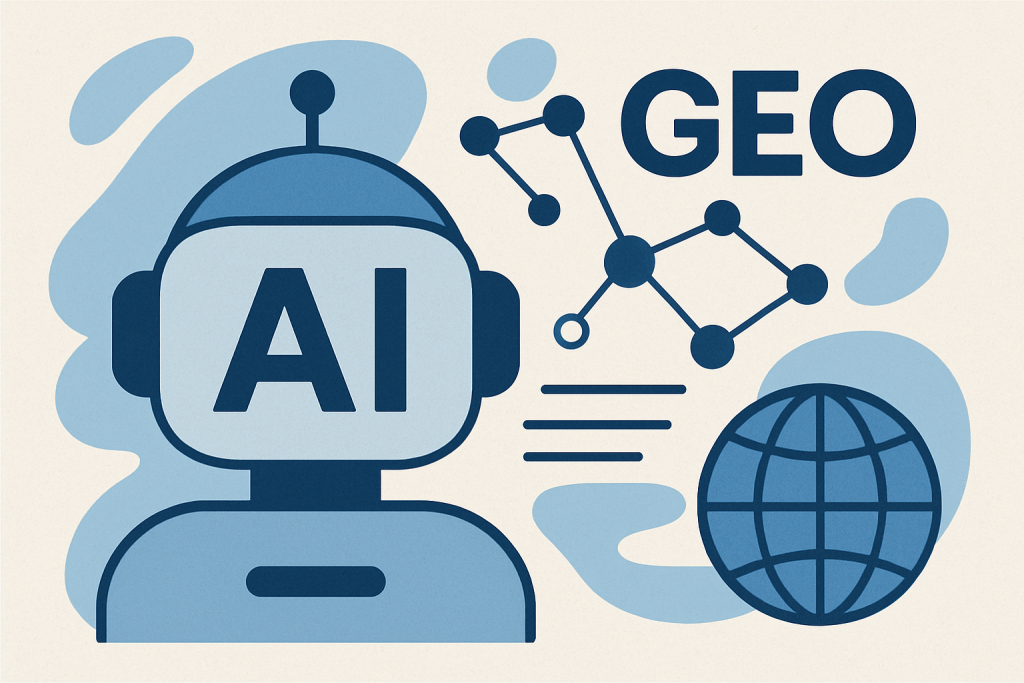In the evolving landscape of digital marketing and artificial intelligence, understanding the difference between SEO (Search Engine Optimization) and GEO (Generative Engine Optimization) is crucial. The attached diagram, which illustrates the process of tokenization and part-of-speech tagging, serves as a gateway to understanding how Large Language Models (LLMs) interpret text and why brands must adapt their strategies to this new paradigm.
The Foundation – How LLMs Understand Language
The diagram starts with a sentence, which undergoes tokenization. Tokenization is the process of breaking down a sentence into smaller units (tokens), such as words, symbols, or punctuation marks. These tokens are then classified:
- If the token is a numeral, symbol, or punctuation mark → It’s assigned a pre-defined part-of-speech tag.
- If it’s a word → It goes through a classification model that assigns meaning, context, and role (noun, verb, adjective, etc.).
This process is fundamental to how LLMs like GPT-5 or Claude process text. They don’t just read words; they analyze patterns, grammar, and semantics, creating structured understanding of human language.
SEO-Wise – Why This Matters for Traditional Optimization
In traditional SEO, tokenization is mirrored in how search engines like Google index websites:
- Crawling & Indexing: Search engines tokenize your site content, breaking it down into keywords, phrases, and metadata.
- Keyword Relevance: Just as the model assigns a part-of-speech tag, search engines assign relevance and weight to your keywords.
- Ranking Factors: The classification model in the diagram is comparable to Google’s ranking algorithms that determine if your page matches user intent.
In this model, keywords, backlinks, and technical SEO dominate. Brands optimize for predictable keyword patterns that machines can tokenize and classify.
GEO-Wise – The Next Step Beyond SEO
However, Generative Engine Optimization (GEO) introduces a radical shift. Instead of search engines just indexing and ranking content, LLMs like ChatGPT, Perplexity, or Google’s SGE are now the intermediaries between your content and the end user.
Here’s how the diagram applies to GEO:
- Sentence = User Prompt
Every GEO journey begins with a prompt, not a keyword. This is where intent becomes more nuanced. - Tokenizer = LLM Parsing
LLMs break down the user prompt into tokens, identifying context and meaning far beyond simple keywords. - Classification Model = Relevance & Authority Signals
LLMs classify content sources, citing the ones they deem most authoritative, clear, and well-structured. This is where brand presence rate and citation footprint become critical metrics. - Part-of-Speech Tag = AI Citation
Instead of ranking in search, your brand is either cited in an AI response or ignored. This is the ultimate outcome of GEO: being embedded within AI-driven answers.

Why Brands Must Adapt
The traditional SEO mindset, optimizing for Google keywords, is becoming less sufficient. With LLMs interpreting, classifying, and generating content, brands must pivot to strategies that:
- Optimize for AI Readability
Content must be structured in a way that LLMs can tokenize and classify effectively. Clear headings, schema markup, and context-rich sentences increase citation chances. - Focus on Authority Across AI Platforms
Just as in the diagram’s classification model, LLMs decide which content is credible. Thought leadership, digital PR, and structured datasets become essential. - Move From Keywords to Conversations
SEO focuses on “keyword hits.” GEO focuses on intent recognition within a conversation. Brands must anticipate prompts, not just search terms.
From POS Tags to AI Citations
The diagram reminds us that every interaction with language—whether by a search engine or an LLM—starts with breaking down and classifying meaning. In SEO, that meant optimizing for Google indexing. In GEO, it means ensuring LLMs classify your content as relevant and authoritative enough to cite in answers.
For businesses, the transition from SEO to GEO is not optional—it’s the next frontier of visibility. Just as tokenization is the gateway to understanding in language models, GEO is the gateway to brand survival in the era of AI search.
Key Takeaway: The future of optimization lies in moving from keyword-first SEO to intent-first GEO, ensuring that your brand is not just searchable, but citable by LLMs in the conversations shaping tomorrow’s digital landscape.


